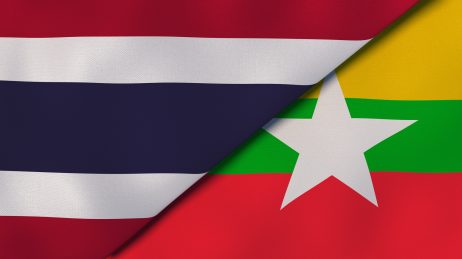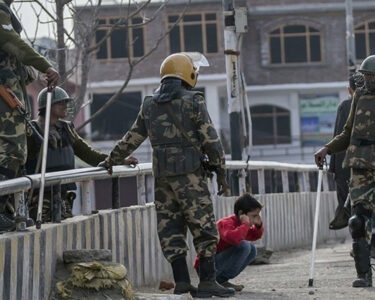Southeast Asia, a region known for its vibrant culture, rich history, and stunning natural beauty, has been marred by ethnic conflicts that have plagued its nations for decades. Two countries that have been particularly affected by these conflicts are Myanmar and Thailand. This article will delve into the complexities of these conflicts, examining the historical context, the roles of various stakeholders, and the challenges and opportunities for resolution.
The Rohingya, a Muslim ethnic group from Rakhine State, have been subjected to systemic persecution, violence, and forced displacement by the Myanmar military and Buddhist extremist groups. Although the ethnic group has existed for over a century, Myanmar law, in its Citizenship Law of 1982, effectively barred the Rohingya from ever being placed on Myanmar’s officially recognized list of identified ethnic groups, leaving the community stateless. It faced its roots in colonial-era policies where policymakers were creating disharmony with the Rohingya and the Buddhist majority. In the quest for divide and rule, the British had to separate administrative regions for the Rohingya and the Arakanese thereby spreading seeds of conflict.
In 2017, the military launched a brutal crackdown on the Rohingya, forcing more than 700,000 to flee to Bangladesh, where they have been living in refugee camps since, with the total displaced population over 1.1 million by 2024. Violence has included massacres, mass rape, and the destruction of whole Rohingya villages during well-planned military attacks that human rights organizations have referred to repeatedly as ethnically motivated genocide. The international community responded with widespread condemnation, and the International Court of Justice (ICJ), based in the Hague, is currently hearing a genocide case filed by Gambia against Myanmar. The international legal proceedings notwithstanding, Myanmar’s military regime seems to show slight concern, especially since its coup in February 2021, which has made an already precarious situation worse. The Rohingya crisis epitomizes an essential case of “othering” conflict, in which one group is dehumanized and excluded from the national identity. Hopes of repatriation and justice remain uncertain even as the Rohingya continue to suffer in camps across Myanmar and Bangladesh.
Since 2004, separatist insurgency has gripped southern provinces of Thailand fighting against the Thai government with various other insurgent groups as part of the Patani Malay National Revolutionary Front (BRN). This conflict originated in the early 20th century when Thailand occupied Patani Sultanate, a kingdom based on Malay Islamic governance. Policies aimed at integrating the country through cultural integration methods, such as Buddhism and the Thai language, have erased the Malay Muslim identity in the southern states of Pattani, Yala, and Narathiwat. Decades of frustration have been building up and surfacing in patterns of violence and growing resentment toward the central government.
As of 2023, this insurgency has resulted in over 7,300 deaths, with most of these being civilians, and roadside explosives and attacks against schools and mosques have left southern Thailand as one of Asia’s most deadly low-intensity wars for two decades. Added to this, the internal displacement of over 220,000 people, has also heightened the economic isolation of the region and exacerbated the living standards of those living within it. The Thai government has responded with the use of military power, which includes the declaration of martial law and emergency security measures; however, these measures have been criticized for their overuse and for further alienating the local population. While the Thai government and separatist organizations like the BRN have engaged in sporadic low-level talks, no agreement has been reached. The dilemma that Thailand faces is how to balance the priority given to national security with needing to recognize the unique cultural and religious identity of its Malay Muslim community.
The international community shoulders a huge responsibility in striving to put an end to the wars. Targeted sanctions, diplomacy, and assistance to the displaced have become part of international action, but these should be much more persistent and strategized to be effective. For instance, the international community has yet to tackle the long-term crisis of Rohingya refugees who continue to sit in overcrowded camps in Bangladesh with very little hope for education or jobs. Refugee fatigue in host countries such as Bangladesh makes their living conditions worse and a lack of action runs the risk of snowballing into potential regional instability.
It also included citizenship of the Rohingya and the conferral of equal rights to the Rohingya as one of the prime reconciliation steps in Myanmar. However, the very rigid posture of the military junta’s entrenchment after their coup severely limits their ability to reform meaningfully again; it is here where ASEAN regional actors will need to be more forward-minded. The Five-Point Consensus on Myanmar, developed by ASEAN in 2021, has thus far not yielded significant outcomes, underscoring the pressing necessity for enhanced international involvement to facilitate dialogue and promote accountability within the country.
For Thailand, the government must reconsider its security policy and be more conciliatory. The use of solely militarized counterinsurgency has only served to aggravate existing distrust, so further investigation into more inclusive solutions is needed. Greater autonomy to the southern provinces, preservation of cultural and linguistic identity, and improving economic opportunities can help to ease the frustrations of the Malay Muslim people. Projects such as Pattani’s cross-border connectivity with Malaysia offer future cooperation with the hope of bringing economic stability-an important factor in the reduction in recruitment to insurgent ranks.
By following a multifaceted approach that addresses the root causes of these conflicts and includes all stakeholders, it is possible to build a more inclusive and peaceful Southeast Asia. However, this goal requires political will on the part of national governments, active engagement from regional actors, and continuous involvement from the international community. Conflict in Myanmar is only one example, though some indicators of the deeper issues concerning ethnic identity, exclusion, and governance take on many other forms in Southeast Asia.
The conflicts in Myanmar and Thailand are not unique to these countries. Such unrest has happened in Indonesia, mainly characterized by wars against secessionist forces in Aceh and Papua. In the Philippines, an armed protracted conflict, from the government’s side of view, existed with the Moro Islamic Liberation Front until the latter gave way to creating the Bangsamoro Autonomous Region. The gains and failures of efforts focused on addressing grievances on ethnic grounds offer very interesting insights into autonomy, inclusive governance, and conflict resolution and might inform strategic approaches to Myanmar and Thailand.
By examining the complexities of these conflicts, It can better pinpoint the structural changes needed to allow vulnerable populations to thrive. The experiences of the Rohingya and the continuing chaos in southern Thailand serve as clear examples of the risks inherent in neglecting ethnic disputes and their capacity to disrupt both the economic and political worlds of the region. Despite enormous obstructions, educational and informative drives aiming at the erasure of stereotypes, investments in local economic projects, and grassroots reconciliation plans will change these areas and ensure sustainable peace.
The ethnic conflicts in Southeast Asia especially in Myanmar and Thailand are complex and multifaceted, with deep historical roots. The resolution will require transformative approaches to addressing the root causes of these conflicts, including the recognition of minority rights, reforming the militarized security apparatus, and securing meaningful support from the international community. The pursuit of peace, although challenging, is a task that cannot be abandoned for the sake of the millions of people affected by these long-standing conflicts.




